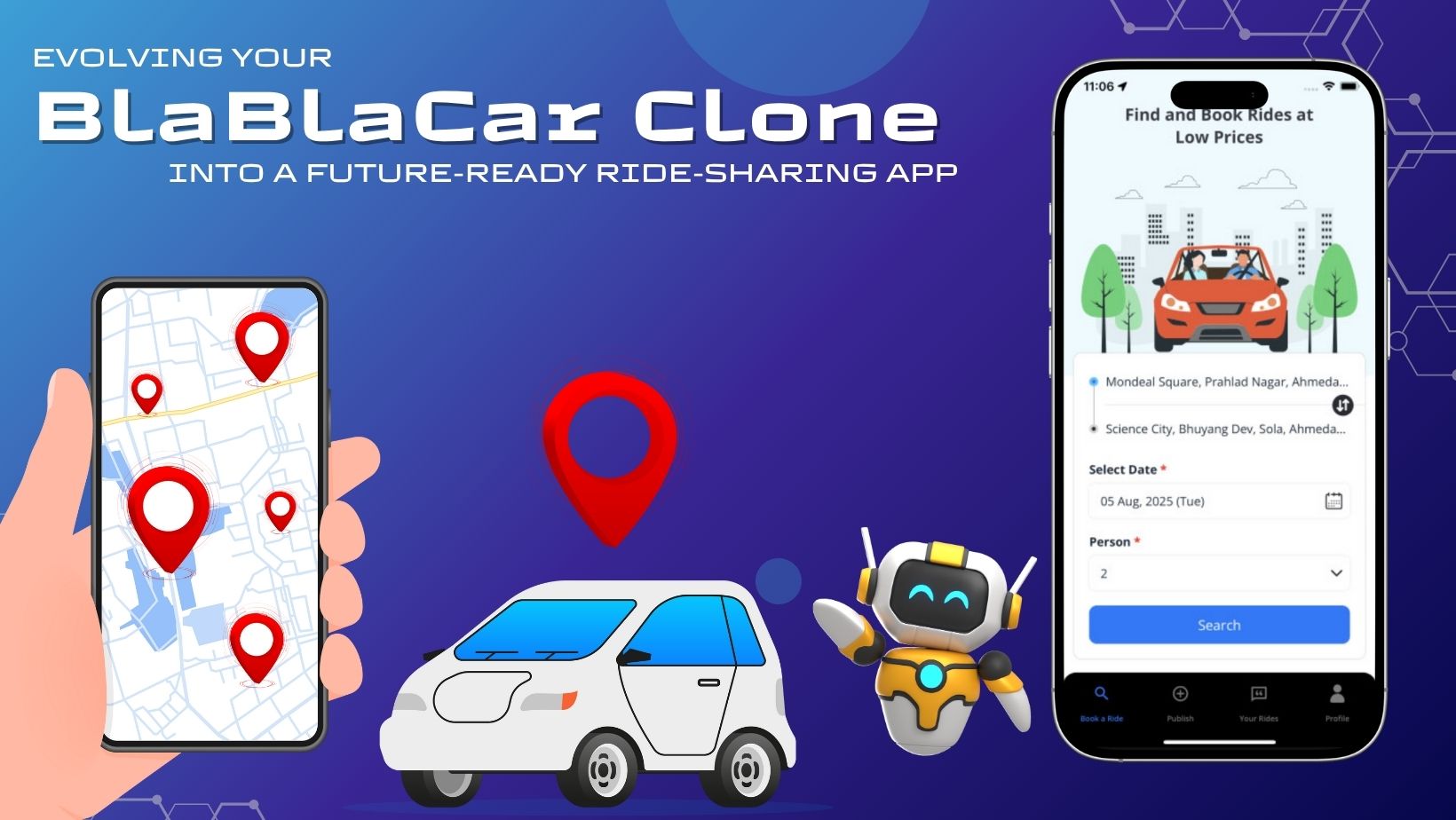The Clone to Innovation Journey
Most entrepreneurs start here: a clone. It’s quick, reliable, and predictable. A BlaBlaCar Clone, for example, already comes with matching features, booking flows, payment integration, so you don’t waste months reinventing what already works.
But here’s the catch: if you stop there, you’re essentially building a copy. And copies don’t lead markets, they trail them. The way forward is to treat the clone as scaffolding. Something to build on.
Sometimes innovation means adding an entirely new feature. Other times, it’s not so dramatic. A smoother cancellation process. Better route optimization. A cleaner notification system. Even the tiniest tweaks make users think, “this feels easier than the others.” And that’s enough to keep them coming back.
Well… until it isn’t. Because user expectations shift fast. Which is why you can’t just rest on a clone.
Why Future Readiness Matters
This one deserves more space.
Mobility moves on constantly like a river. It just doesn’t stay put. As administrative bodies of cities change the rule position keep changing as well, so do the needs of the people. Latest technologies, Aim Electric Vehicles, autonomous shuttles are changing the landscape of our ever familiar ride sharing landscape. Just like the evolution of living things, if your ride sharing app des not adapt, it will go extinct.
Preparing yourself for the future is more than adding attractive or trending features. It has to make sense and stick around. Can your platform handle sudden spikes in demand? Can it integrate an e scooter service next year without rewriting the entire codebase? Will it support new payment modes or government compliance rules without weeks of downtime?
These are boring questions on paper, but in practice, they make or break trust. A ride sharing app that collapses during rush hour is done. An app that ignores local preferences (like female only carpooling or multilingual support) feels tone deaf.
Being “future ready” means showing users, and drivers, that you’ve thought ahead. That you’ll still be relevant tomorrow.
Features That Go Beyond the Basics
This section can be short, because let’s be honest, lists of features get dull. But still, here are a few that matter:
- AI driven matching so rides don’t go half empty.
- Dynamic pricing (fair, transparent, not exploitative).
- Safety add ons like emergency buttons and verified IDs.
- Smart notifications, “leave now, traffic’s building up” kind of thing.
- Multi modal options. Imagine booking a carpool and hopping on a metro within the same flow.
It doesn’t need to be twenty bullet points. Just a few that users genuinely care about.
Scaling into a Unique Mobility Brand
Now this part deserves more attention. Because scaling isn’t only about servers and infrastructure. It’s about identity.
Clones are invisible. Nobody remembers them. But a brand with a voice, a look, and a clear promise? That sticks. Understand this, most users have access to multiple apps. The only reason for them to stick to yours is trust. You have to prove your trustworthiness in the market. Something like that is going to take time.
Community features like loyalty programs, referral rewards, or even gamified challenges can make people feel part of something bigger. And don’t forget data. Data is gold, not just for monetization, but for knowing when to expand, what routes need better coverage, and where users feel underserved.
Here’s the uncomfortable part: scaling exposes weak foundations. If the base of your code isn’t modular, or flexible that can be managed with the click of a button, you will have to seek assistance of developers at every stage. Which is why planning for scalability from day one is crucial.
Adapting to Regional Markets
This one, I’ll keep a little shorter.
If you’re in the UAE, users expect Arabic English toggling, flexible digital payments, and heat friendly ride options. If you’re in Europe, maybe the priority is emissions compliance. Singapore? Efficiency and government alignment.
The point is, don’t treat markets as interchangeable. Localization is not a side task, it’s the difference between adoption and abandonment.
Integrating AI & Predictive Tools
AI deserves its own spotlight. Because it’s not just about fancy algorithms; it’s about usability.
Predictive analytics can forecast peak times and adjust supply before riders even open the app. AI can recommend alternative pickup spots to cut delays. Chat bots? They handle the simple stuff, so human support isn’t overloaded.
It’s not futuristic anymore. It’s baseline expectation. If your BlaBlaCar Clone doesn’t evolve with AI, it risks being yesterday’s news faster than you think.
Building for Tomorrow, Today
Alright, last piece. And maybe the simplest.
Future readiness is really about flexibility. The ability to add, remove, or modify features without breaking the whole thing. Think of it like Lego bricks, not cement.
Regulations will change. Users will demand new features. Competitors will roll out innovations you didn’t anticipate. If your platform can’t adapt, well, you’ll be stuck.
The goal? To build something living, something that grows. A platform that starts as a clone but matures into its own.
Conclusion
So here’s the truth: a BlaBlaCar Clone is just a launch pad. Nothing more. However, the stronger the launch pad, the higher is it going to allow you and your business to soar. This is why, ensure that you only purchase your ride sharing app after extensive research.
Take the time to study the market. Understand your competitors, the different companies that offer you cloned app solutions, whether these solutions are plain and generic or customisable using white labelling and most importantly, whether or not you will be able to get the source code of the app delivered to you on your server.
Once you do that, you can be on your way to a very successful on demand ride sharing app like the BlaBlaCar.
